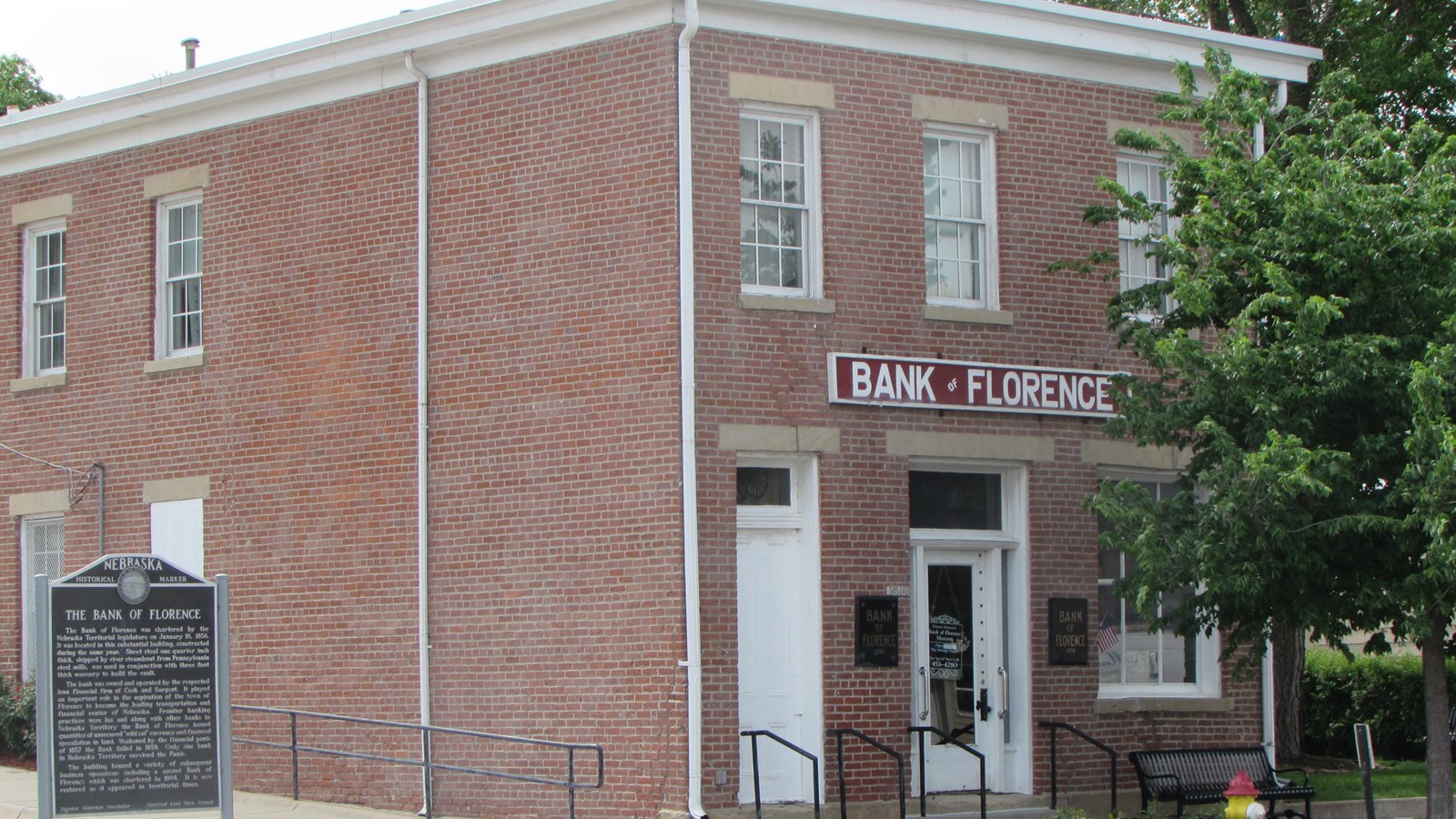Last updated: August 4, 2023
Place
Bank of Florence

David Calease, NPS
Quick Facts
Location:
8502 North 30th Street
Significance:
Commerce
Designation:
National Register of Historic Places; Omaha Local Landmark
MANAGED BY:
Non-profit organization
The Bank of Florence is located at 8502 North 30th Street in the historic neighborhood of Florence. Listed in the National Register of Historic Place and designated as an Omaha Local Landmark, the bank played an important role in the economic development of Florence and is one of the oldest commercial buildings in Nebraska.
Florence was briefly occupied by Mormon pioneers en route to the Utah Territory during the winter of 1846. In 1855, James C. Mitchell of Council Bluffs, Iowa, platted a new town at the site of the Mormon Winter Quarters and named it after his newborn granddaughter, Florence. The town quickly grew and was considered Omaha’s major rival, competing against the larger city for the coveted capital seat of Nebraska Territory and the eastern terminus of Union Pacific’s transcontinental railroad, both of which went to Omaha. Florence was annexed by the City of Omaha in 1917.
The Bank of Florence was chartered by Nebraska’s territorial legislature on January 18, 1856. The following summer, the building was constructed for Cook, Sargent and Parker, a financial firm based in Davenport, Iowa. Frontier banking practices were lax, and along with other Nebraska banks, the Bank of Florence issued quantities of unsecured “wildcat currency” and financed land speculation. Following the Panic of 1857, the Bank of Florence failed in 1859.
The two-story brick building was constructed in the Greek Revival style in 1856. The building was used by various businesses until the formation of the second Bank of Florence in 1904, which ceased operations in 1936. Very few exterior alterations have been made despite the several commercial tenants that have occupied the building over the years. The original double doors were replaced by a single door the original windows, consisting of multiple lights, have been replaced by large, single panes of glass.
Today, the building functions as the Bank of Florence Museum and is owned by Historic Florence.
Florence was briefly occupied by Mormon pioneers en route to the Utah Territory during the winter of 1846. In 1855, James C. Mitchell of Council Bluffs, Iowa, platted a new town at the site of the Mormon Winter Quarters and named it after his newborn granddaughter, Florence. The town quickly grew and was considered Omaha’s major rival, competing against the larger city for the coveted capital seat of Nebraska Territory and the eastern terminus of Union Pacific’s transcontinental railroad, both of which went to Omaha. Florence was annexed by the City of Omaha in 1917.
The Bank of Florence was chartered by Nebraska’s territorial legislature on January 18, 1856. The following summer, the building was constructed for Cook, Sargent and Parker, a financial firm based in Davenport, Iowa. Frontier banking practices were lax, and along with other Nebraska banks, the Bank of Florence issued quantities of unsecured “wildcat currency” and financed land speculation. Following the Panic of 1857, the Bank of Florence failed in 1859.
The two-story brick building was constructed in the Greek Revival style in 1856. The building was used by various businesses until the formation of the second Bank of Florence in 1904, which ceased operations in 1936. Very few exterior alterations have been made despite the several commercial tenants that have occupied the building over the years. The original double doors were replaced by a single door the original windows, consisting of multiple lights, have been replaced by large, single panes of glass.
Today, the building functions as the Bank of Florence Museum and is owned by Historic Florence.
